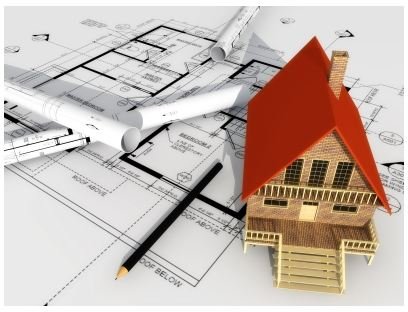Understanding Requirements for New Construction Home Loans
Not a Run-of-the Mill Mortgage
Individuals who have decided to build their own home may be wondering what the requirements are for construction loans. It is crucial that there is a basic understanding of how these mortgages work, as they are not the same as a traditional mortgage.
Some of the documentation is the same; however, there are other documents that are not required with a standard mortgage. Here are some of the unique requirements for a construction loan:
A) Land purchase agreement - Generally speaking, a person who has decided to build their own home either purchases land or has existing land. If they are purchasing the land, then the land purchase contract (and any mortgages on the land) are made available as part of the application process.
B) Builder agreement - For the homeowner who is seeking a construction loan, the agreement they have with the builder is an additional required document. This document should include cost projections, building schedule and projections for when the builder anticipates payments on each stage of construction.
C) Builder profile - Many lenders require that builders provide them with a copy of their license, a list of potential vendors and a copy of their insurance. Most construction lenders run background checks on the builder to ensure that there are no problems, which could increase their risk.
D) Inspections and additional documents - There are numerous inspections that will likely be required. Some of these are governed by state law but in general, they will be the same. Various inspections include perk tests (e.g., soil stability), sewage or septic inspections and property survey. It is important to identify other inspections or reports that may be required by individual states as well as individual lenders.
There may be other supporting documents that the lender will require as part of the overall loan package. Individuals searching for this type of financing should verify what else they may need to provide. This helps the loan process go more smoothly.
Understanding the Process
Once all of the “extra” documents have been collected, a borrower still has to meet basic loan criteria including loan to value ratios, debt to income ratios, and credit criteria. Borrowers are still required to fill out the standard loan documents including Form 1003, credit authorizations, tax returns and paychecks.
Construction loans are unique in the way that they are paid to the buyer. Rather than funding a loan all at one time, these types of loans work more like a line of credit. The loans are drawn down in pieces as various milestones are completed and reported to the lender. This involves the new homeowner working with the builder to gather the payment information. Lenders typically require supporting documents before they release the funds, which would be sent directly to the builder.
After construction is complete
Once the construction on the property is complete, a homeowner generally needs to transfer to a standard mortgage. Some construction loan contracts include an automatic rollover to a standard fixed rate mortgage. In other cases, the new homeowner may need a bridge loan to fill in the gaps between when the construction loan ends and the new mortgage begins.
Making the transition
When transitioning from these temporary loans to a permanent loan, the homeowner needs to requalify for a mortgage. This involves the same process as any standard mortgage. This means a property appraisal, new tax returns, new mortgage application and all other needed documents are provided to the new lender.
There are some items that are unique to construction loans that consumers need to be aware of. These include:
- Most are adjustable rate - Unlike standard mortgages, the rates on construction loans are typically adjustable and are tied to prime rate.
- Most are designed for short-term - Most of these loans are short-term and based on the time that it will take to construct the property.
- Insurance required - Most lenders require that the homeowner and the builder have insurance. The builder needs to certify that they have a bond (insurance) for completion while the homeowner may be required to have insurance that “expands” as the property is developed.
When considering a construction loan, it is prudent to get a pre-approval for both the construction loan and the end finding. This helps a homeowner avoid unneeded fees. The contracts should be read carefully to understand the limitations of these types of loans and to understand how the loan will be paid, what the repayment plan involves and any information that may adversely impact the homeowner.
Resources
Sources
Bankrate How construction loans work https://www.bankrate.com/brm/news/mtg/20020515c.asp
Image credits
Construction Author Salvatore Vuono via FreeDigitalPhotos.net
